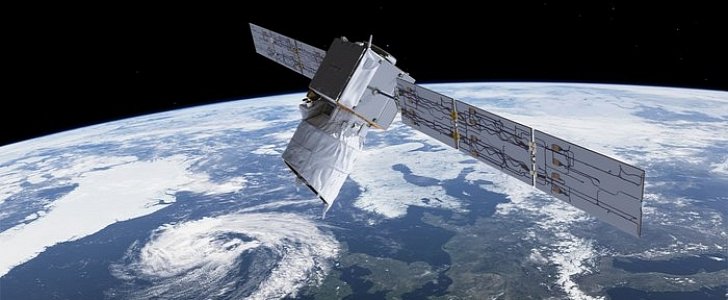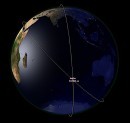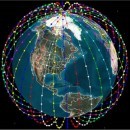Placing a satellite in orbit and keeping it there is a complicated move that requires a lot of planning and the use of mathematics few of us understand. In the decades that have passed since humans first sent machines into orbit, only a handful of collisions between live satellites occured.
On Monday, the European Space Agency (ESA) said it had to perform a collision avoidance maneuver to place one of its satellites out of the harm’s way. Its satellite is called Aeolus Earth, and the impending doom was SpaceX’s recently launched Starlink constellation.
According to the agency, after looking carefully at data provided by the 18th Space Control Squadron of the U.S. Air Force, it was determined that there was a chance one of the Starlink satellites (No. 44) would hit Aeolus.
The chance of the two bumping into each other was 1 in 10,000 last Thursday. That probability is a red line in ESA’s books, but seemed not to worry SpaceX, who told the Europeans “they had no plan to take action at this point.”
By Sunday, the chances of a collision increased to 1 in 1,000, and ESA decided to act.
A series of thruster burns commands were sent to Aeolus, moving the satellite up by 350 meters (1,148 feet) and out of the danger zone. ESA says this collision avoidance procedure against a constellation was a first in its history.
The Europeans are warning that with satellite clusters such as Starlink being planned across the world, the risk of such an incident happening again will only get bigger.
That’s why they are calling for the creation of an “automated risk estimation and mitigation initiative” that should allow better response time and procedures in such cases.
Despite the near miss, ESA does not blame SpaceX for the incident.
“No one was at fault here, but this example does show the urgent need for proper space traffic management, with clear communication protocols and more automation,” said Holger Krag, head of space safety at ESA.
“This is how air traffic control has worked for many decades, and now space operators need to get together to define automated maneuver coordination.”
Presently, it is estimated over 9,000 satellites are orbiting Earth, only 2,000 of which still functional.
According to the agency, after looking carefully at data provided by the 18th Space Control Squadron of the U.S. Air Force, it was determined that there was a chance one of the Starlink satellites (No. 44) would hit Aeolus.
The chance of the two bumping into each other was 1 in 10,000 last Thursday. That probability is a red line in ESA’s books, but seemed not to worry SpaceX, who told the Europeans “they had no plan to take action at this point.”
By Sunday, the chances of a collision increased to 1 in 1,000, and ESA decided to act.
A series of thruster burns commands were sent to Aeolus, moving the satellite up by 350 meters (1,148 feet) and out of the danger zone. ESA says this collision avoidance procedure against a constellation was a first in its history.
The Europeans are warning that with satellite clusters such as Starlink being planned across the world, the risk of such an incident happening again will only get bigger.
That’s why they are calling for the creation of an “automated risk estimation and mitigation initiative” that should allow better response time and procedures in such cases.
Despite the near miss, ESA does not blame SpaceX for the incident.
“No one was at fault here, but this example does show the urgent need for proper space traffic management, with clear communication protocols and more automation,” said Holger Krag, head of space safety at ESA.
“This is how air traffic control has worked for many decades, and now space operators need to get together to define automated maneuver coordination.”
Presently, it is estimated over 9,000 satellites are orbiting Earth, only 2,000 of which still functional.




